Poland was hilarious. We had some missteps: a mouse in the house, a middle-of-the-night knight, a mooing mother, and a great search for dessert. (Brent will fill you in.) But, the grand gem of the Poland trip was also the darkest.
Visiting Auschwitz was profoundly important for me for this trip. I don’t know if I simply wanted to honor the dead, if I wanted to try to fathom how this could possibly happen, or perhaps to ask, “what would I have done?”
[Arbeit macht frei – “Work makes you free”]
Anticipating an emotional day, we chose to visit early in order to avoid the mandatory tour guide. With the roughly one hour drive and exactly four kids and approximately two hot plates, a tea kettle, and one electrical outlet, this “early” proved almost too ambitious, but we arrived before the cutoff time by ten minutes. On our own, we hoped to regulate the rate of exposure all of us, especially the kids, had to various parts of the camp. Good call.
Seeing the camp, one of at least 20,000 such camps, loudly shouts that Hitler did not do this alone. In fact, besides the obvious guards, thousands of people at many levels of responsibility orchestrated these camps. Railcar operators, chemical suppliers, building contractors, accountants, food providers, postal workers and goldsmiths are among the types of citizens who would have helped the mission of the camp with a degree of knowledge. Some estimates place the number of people involved with executing the Holocaust at substantially over 100,000. The Auschwitz museum has direct records of 8400 guards who worked at Auschwitz.
While traveling this fall, cities have candidly displayed their previous deep root of anti-semitism, pre-Hitler. In addition, Darwinian style Eugenics was incredibly prevalent. We saw a sign at the Museum of London from the time between the World Wars that explained how improper breeding has led to terrible suffering and disabilities, and cited the number of blind and deaf in London at the time. This was an advertising sign, not an editorial or an obscure website, but a sign.
The powerful current for this mass elimination of those perceived unwanted flowed across Europe. Those who wanted to fight it, did so at the risk of their selves. The camp has meticulous records of neighbors or others who were also killed for giving a Jew a piece of bread. Auschwitz has a special cell for a priest who resisted the Nazis. By resisting, you agree to join your fate with theirs.
Also, displayed are the first reports of the camps in the US newspapers. We read a clip from the LA Times. Somehow, the tragedy seems just as difficult to grasp today, despite seeing it.
According to the Holocaust Museum in Washington DC, six million Jews were killed by the Nazi government at work camps, extermination camps, or through other state sponsored methods. Six million is approximately two-thirds of the European Jewish population at the time and over one-third of the World Jewish population at that time. Today, the Jewish population still is not back to it’s pre-war levels. And, the European Jewish population is a little over two million.
[Father Kolbe who volunteered to take the place of another man in a starvation cell]
Furthermore, the German government killed approximately 1.9 million non-Jewish Polish citizens (sometimes at camps), over 20,000 Roma people, around 200,000 disable people, thousands of Jehovah’s Witness, and an unknown number of homosexual men.
[From the Dutch display–Anne Frank, second from the left, on her 10th birthday, Amsterdam, 12 June 1939. She went to a different camp.]
[The first commandant of Auschwitz was tried and sentenced to death after the war by the Polish Supreme National Tribunal. He was hanged on these gallows at Auschwitz in 1947.]
The camp is divided into two camps: Auschwitz and Birkenau. The SS forces “outgrew” Auschwitz and needed an additional camp that was more efficient. We completed our Auschwitz tour and ate a picnic lunch at a park outside the camp. Right next to us, a group of Isreali high school students munched on their box lunches after their tour. Oh how we wanted to talk with them! They were busy chatting with each other, and we thought better of peppering a person their age with questions.
Visiting Birkenau (Auschwitz II) required a little drive of a couple of miles.
[The chimneys remain after each barrack was torched by the fleeing Nazis attempting to hide their atrocities.]
We tried to be brief as we looked at some somber lodging facilities,
[stones worn smooth by people sitting on the bricks for heat]
as well as the train stop at the selection platform where those in charge decided who would work and who would go straight to the chambers. At least 75% were deemed ready for immediate execution.
The chamber ruins are still there. Now, a memorial to the Shoah, the Hebrew word for catastrophe, beautifully interrupts the killing places.
We returned to the parking lot a while later to find one of the doors of the SUV wide open. Gasp. Quickly we jogged back to see if our friends’ car was intact and if by any chance our electronic collection of iPads and camera equipment remained. Thank God, nothing had vanished and the car was fine. The battery wasn’t even dead. A solid bit of gratitude at the end of a day of solemnity.
The day was emotional for all of us. Contemplating that level of evil begs for explanation and leaves a mark on any tender heart. As parents, we asked others who’d been, thought about it and debated taking the kids at all. In hindsight, we are glad we showed this place to the kids but of course we don’t know. It wasn’t what they were most keen to journal about. We kept the museum visits to a light-hearted standard for several days afterwards. That evening we took the family out for a nice dinner in the hometown of Pope John Paul II, a town on the route to our farm cottage. When we ask them about our visit it doesn’t seem to have traumatized them.
Secretly, I do hope it leaves a mark, and I think that’s why I wanted to see it with my own eyes. I hope it reminds me to be brave. I hope the children remember to be kind. I hope we all are alert. Where is this happening, now? Who do we not value? Who is expendable? Where are we so blinded by culture that we can’t see terrible injustice? What can we do now?
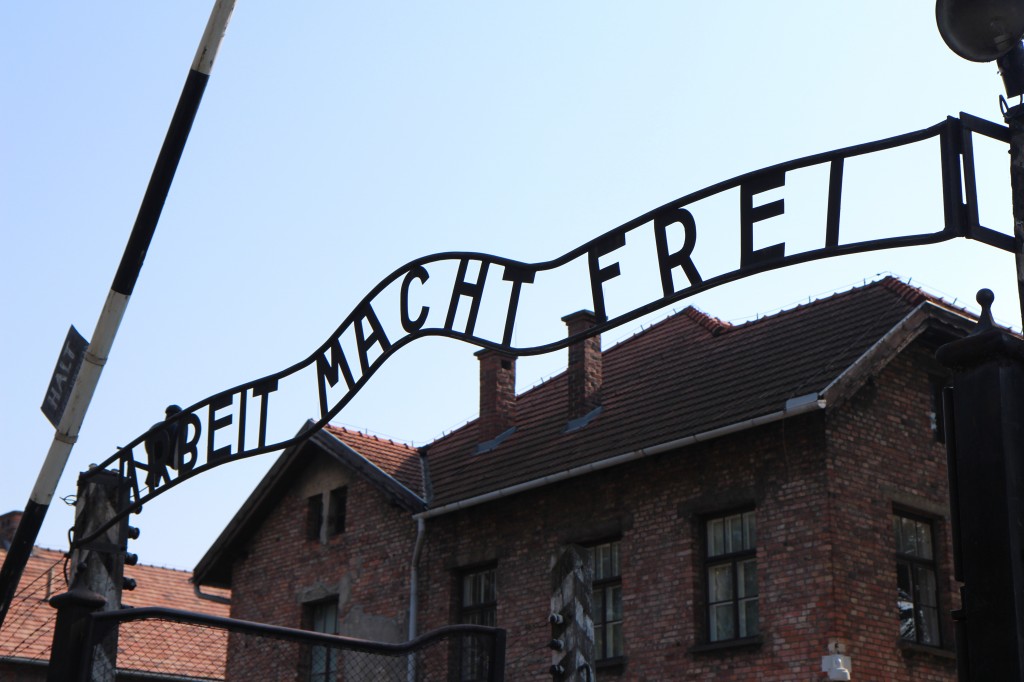
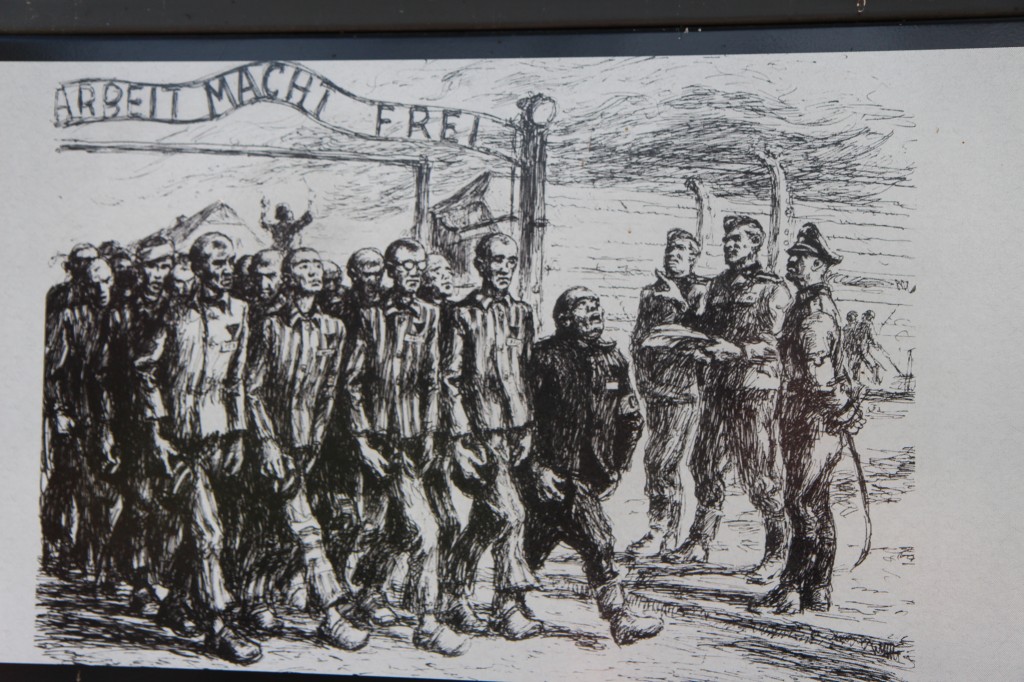
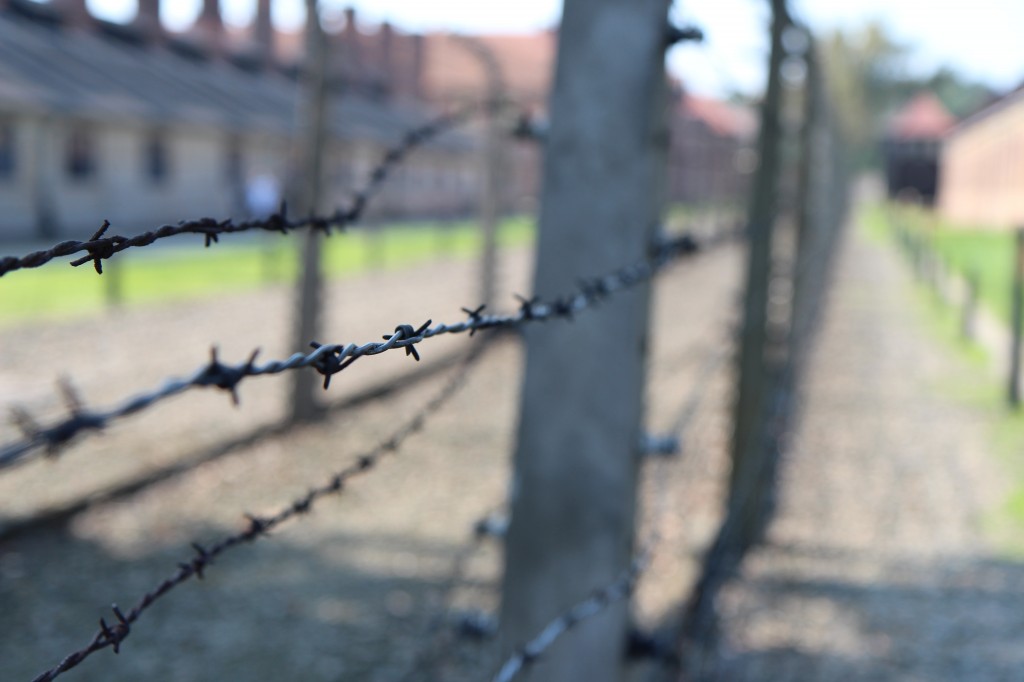
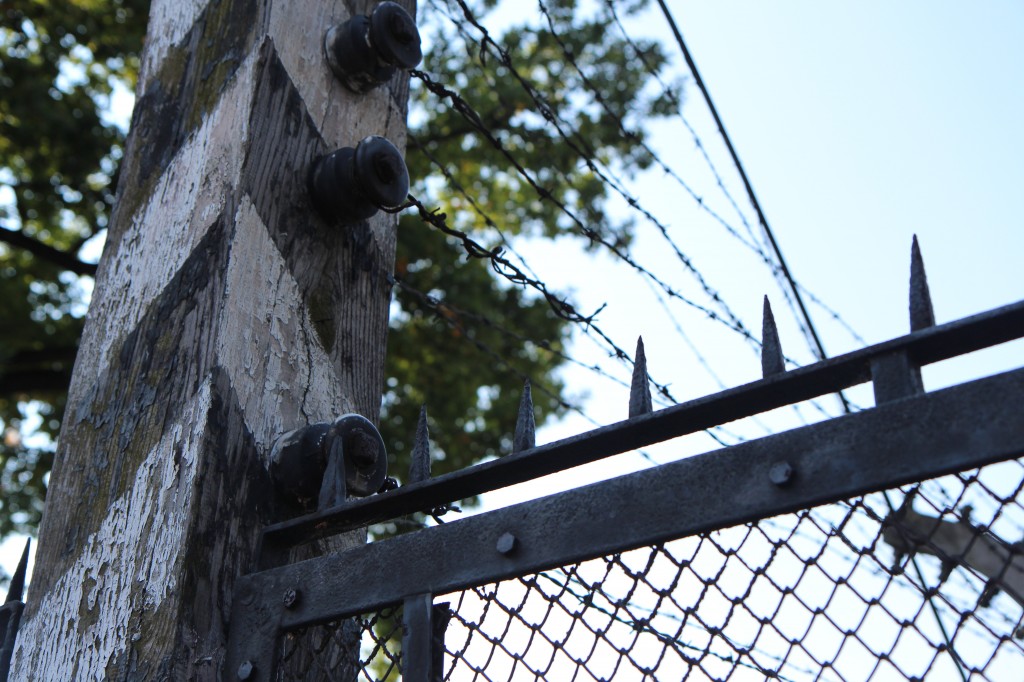
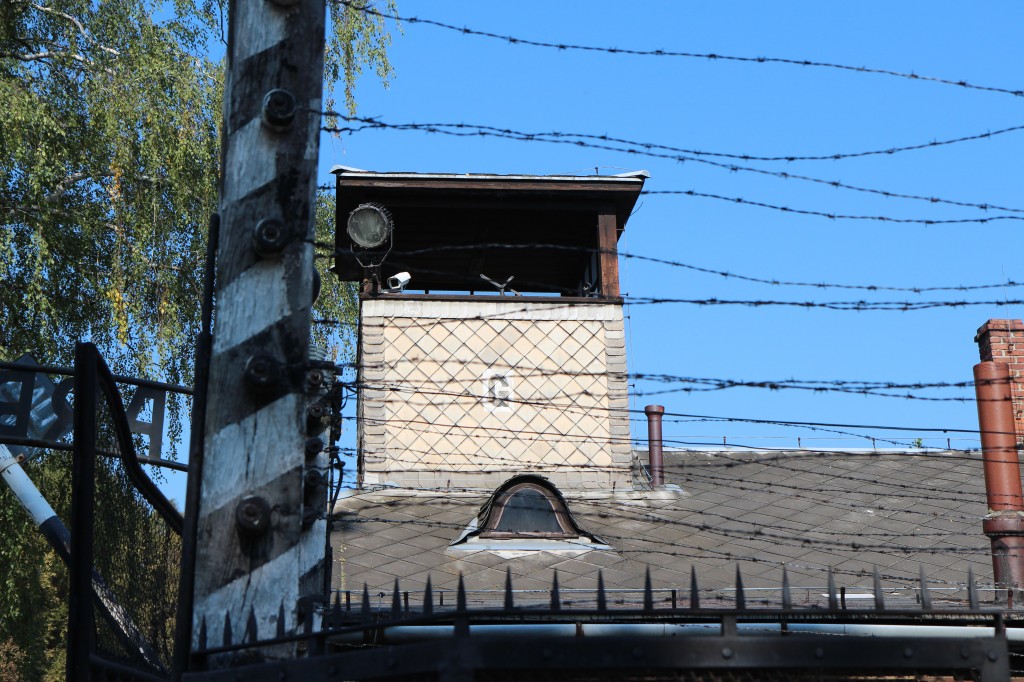
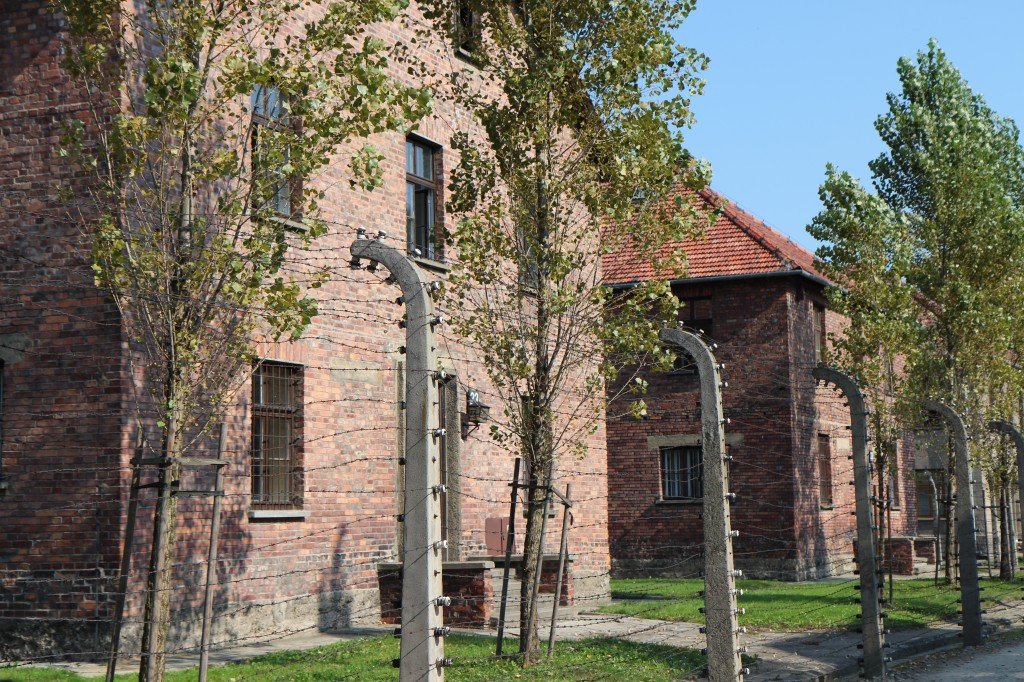
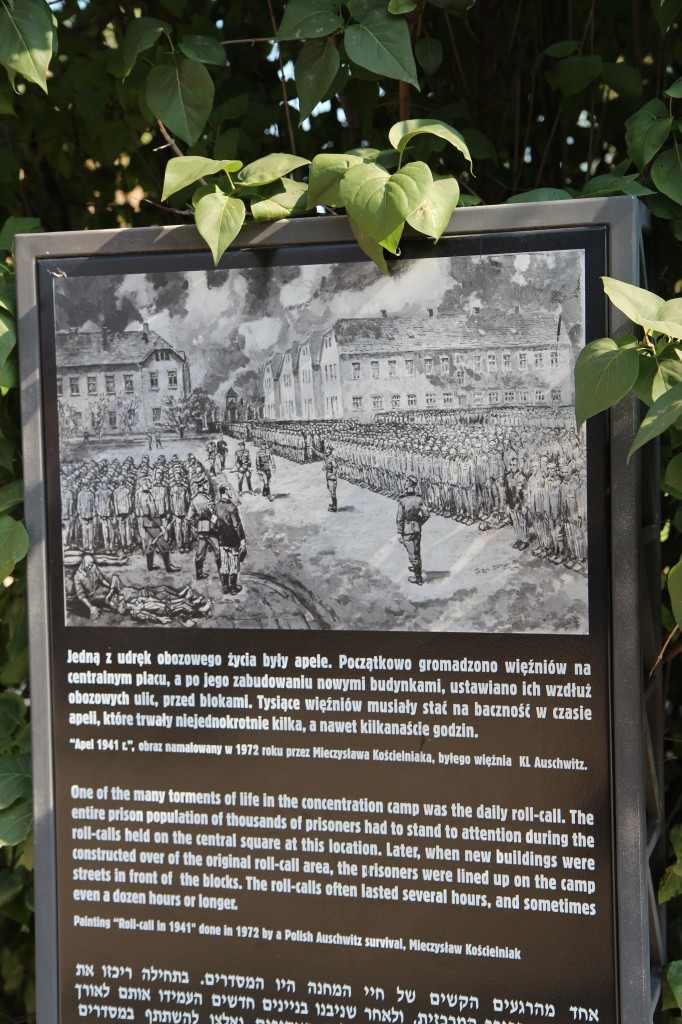
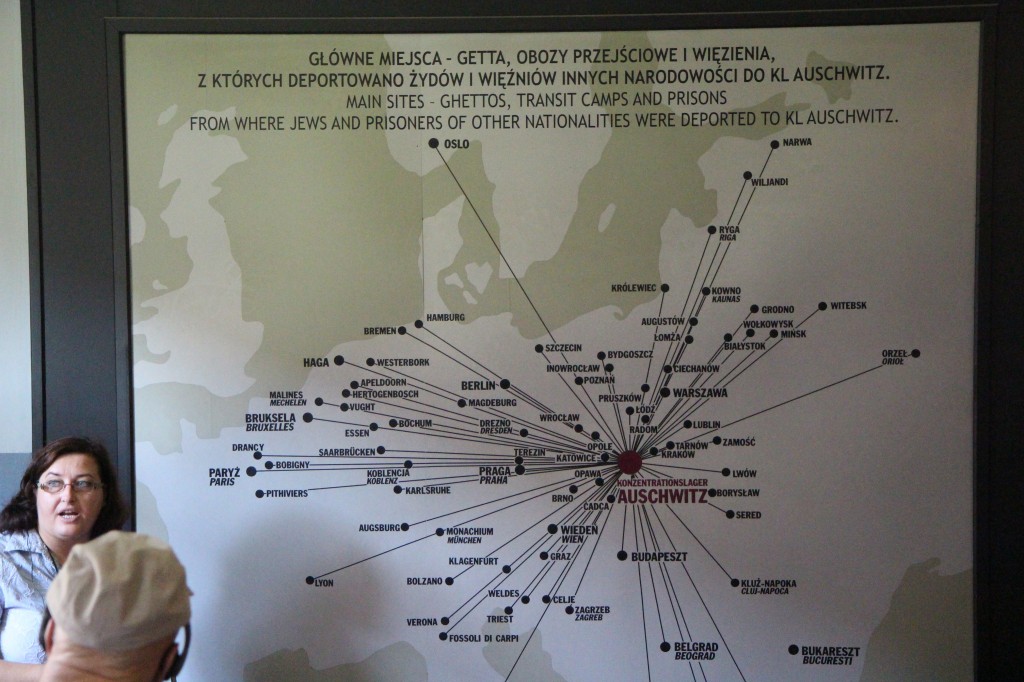
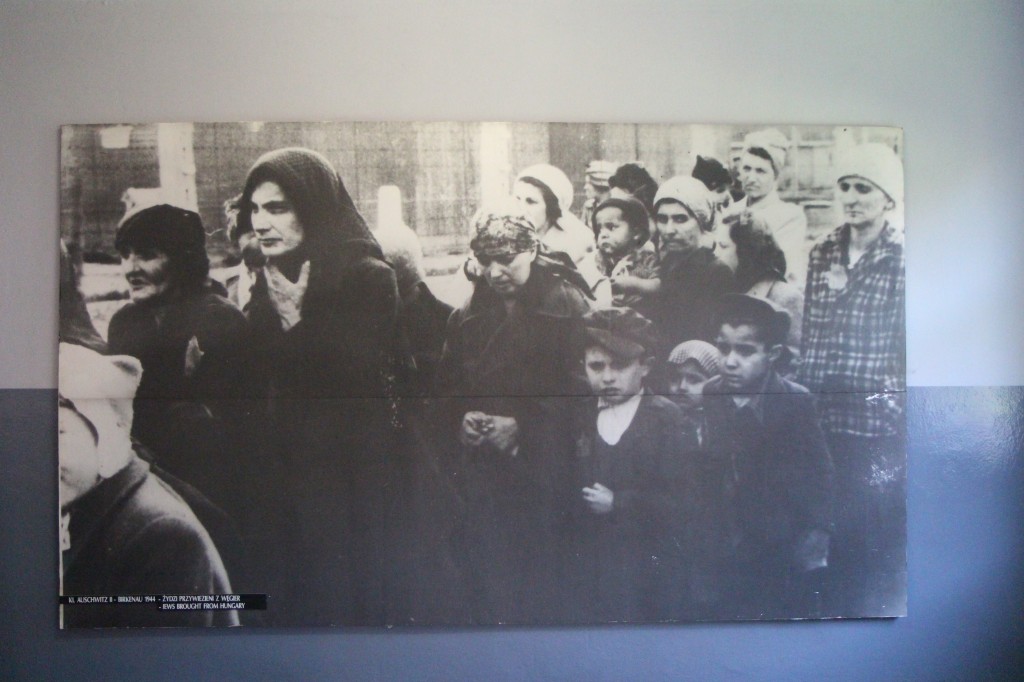
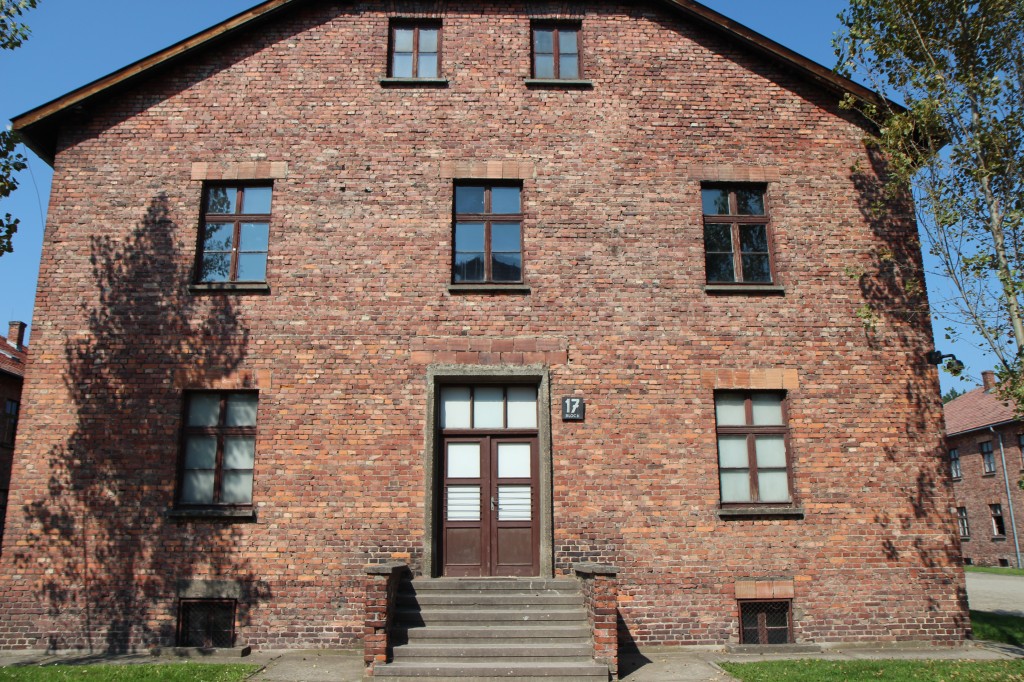
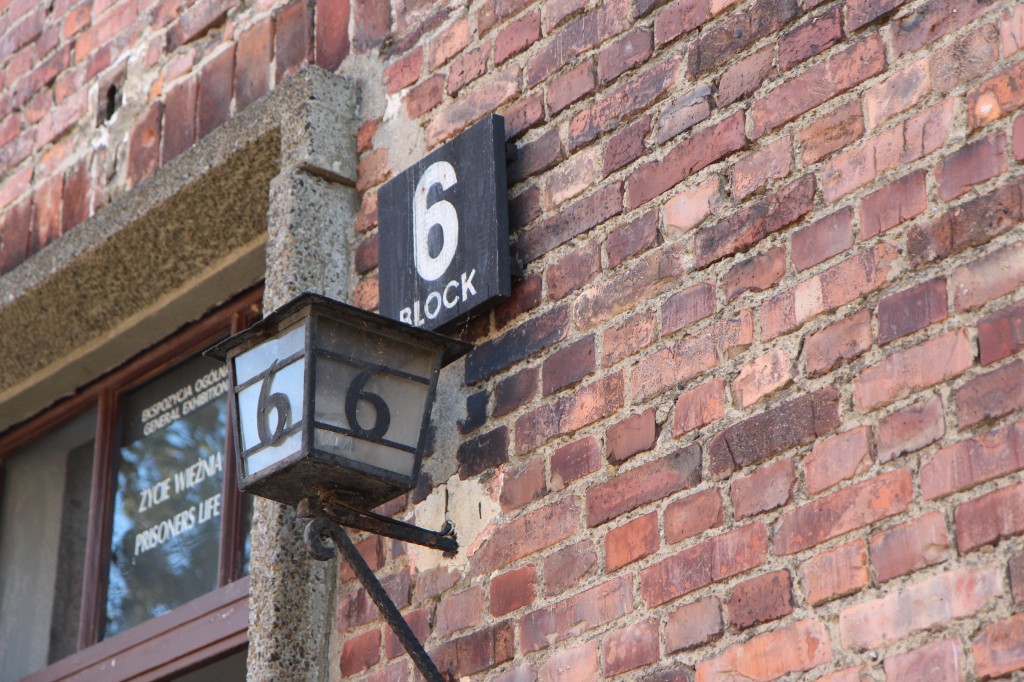
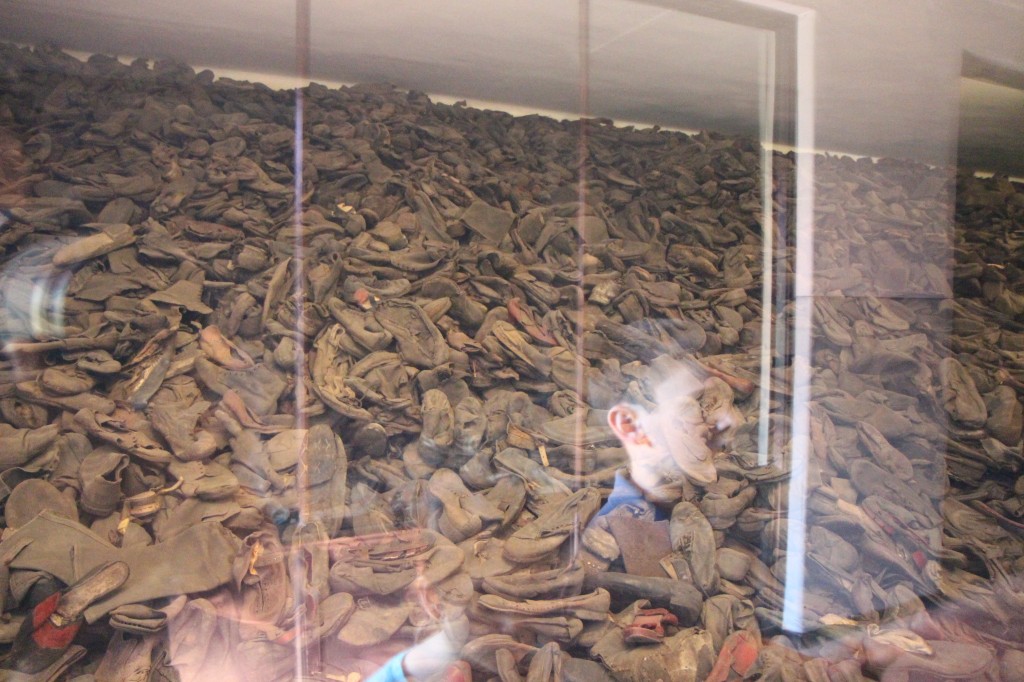
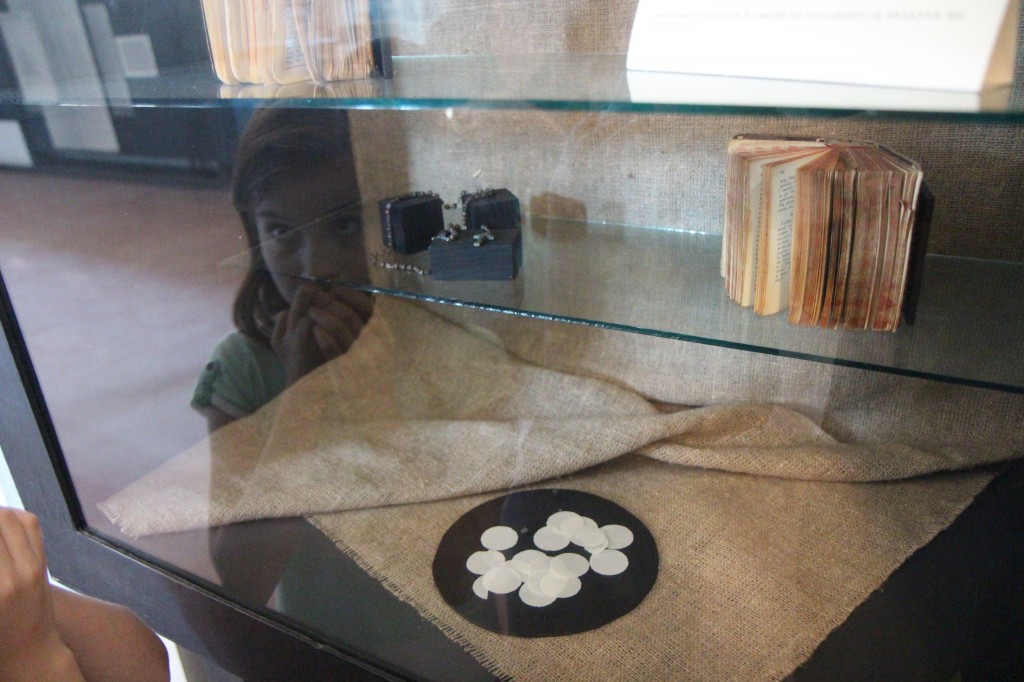
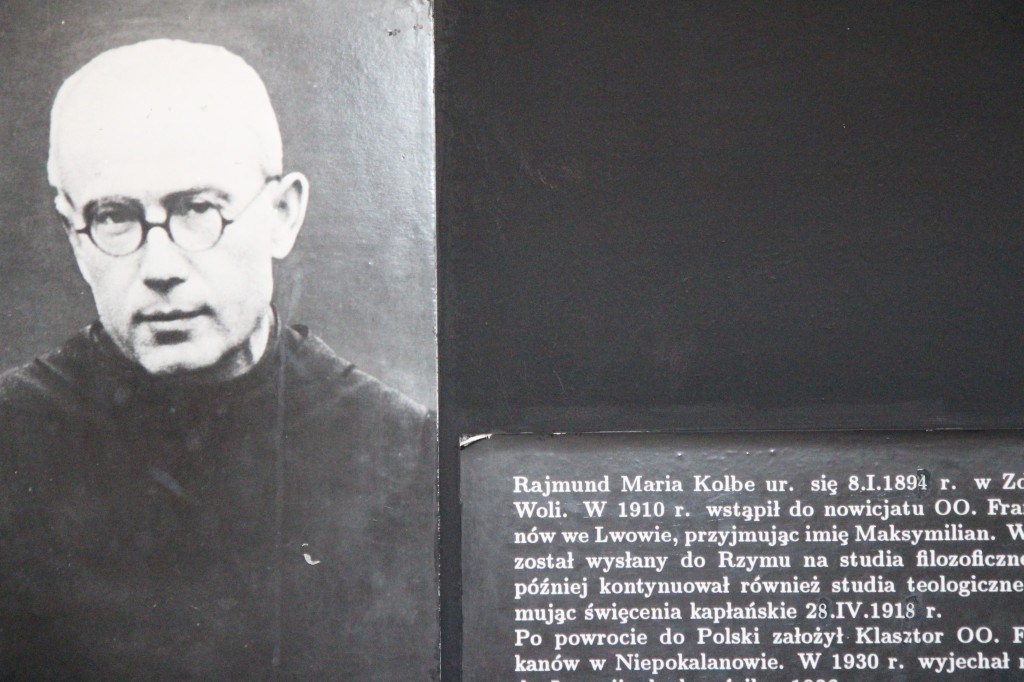
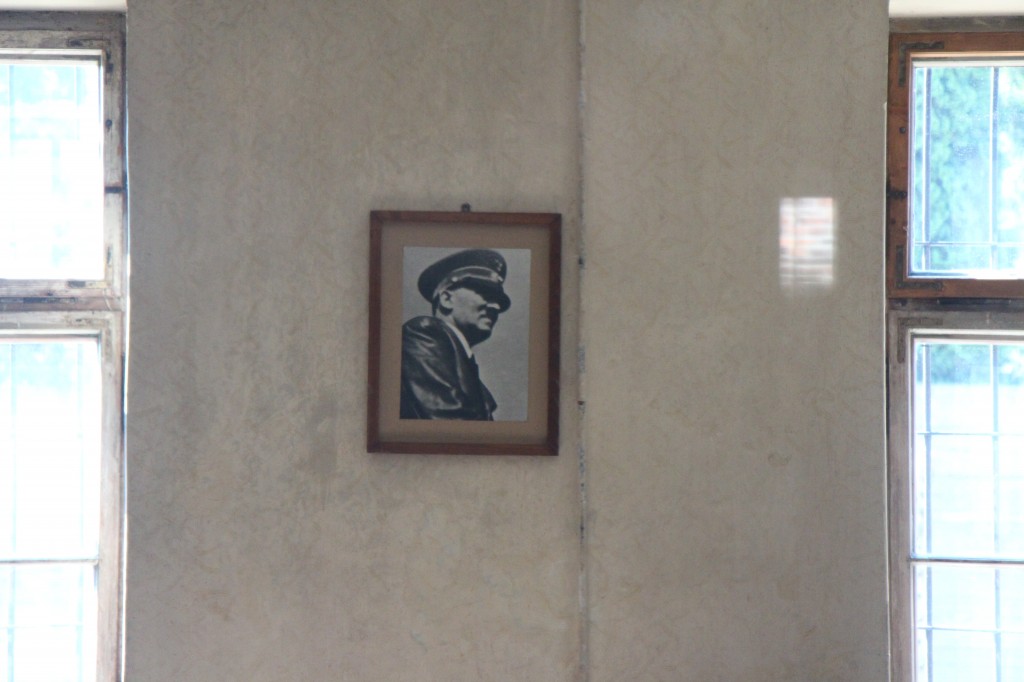
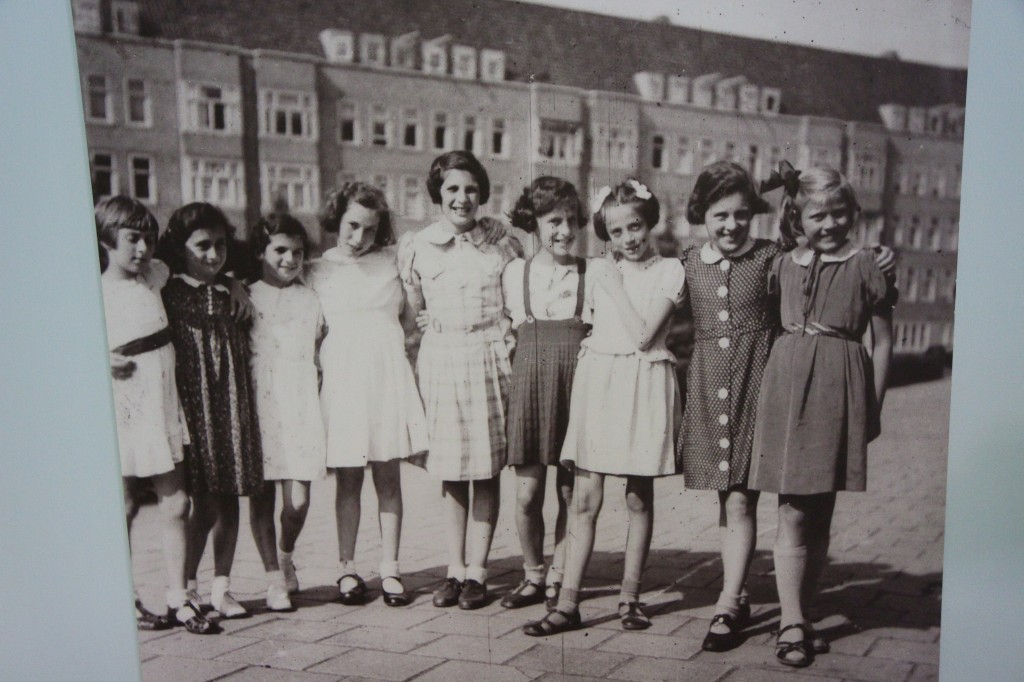
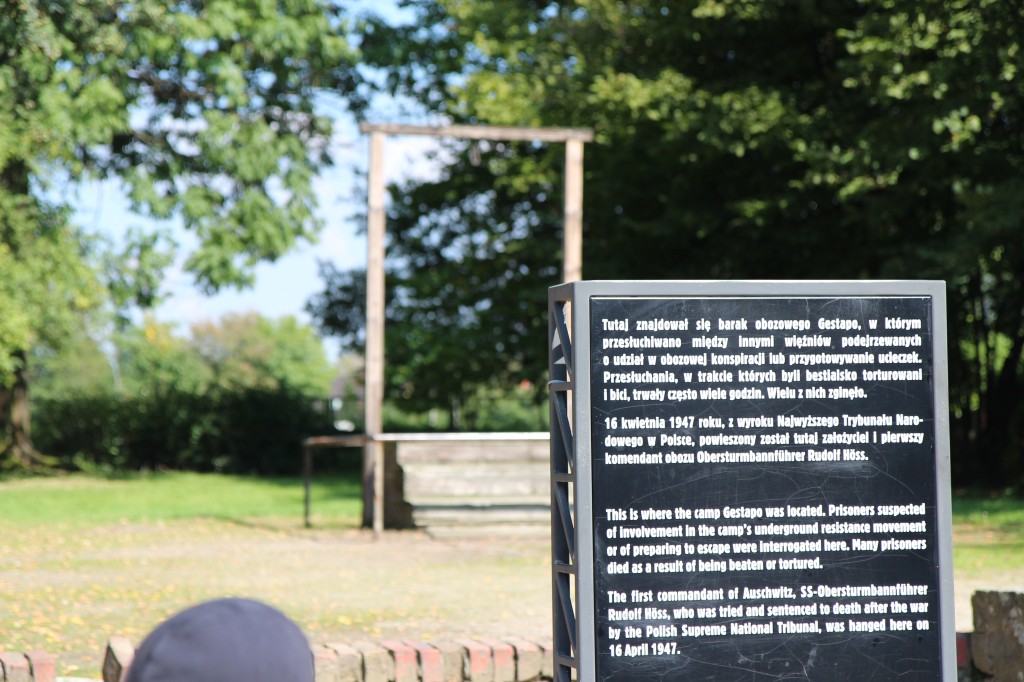
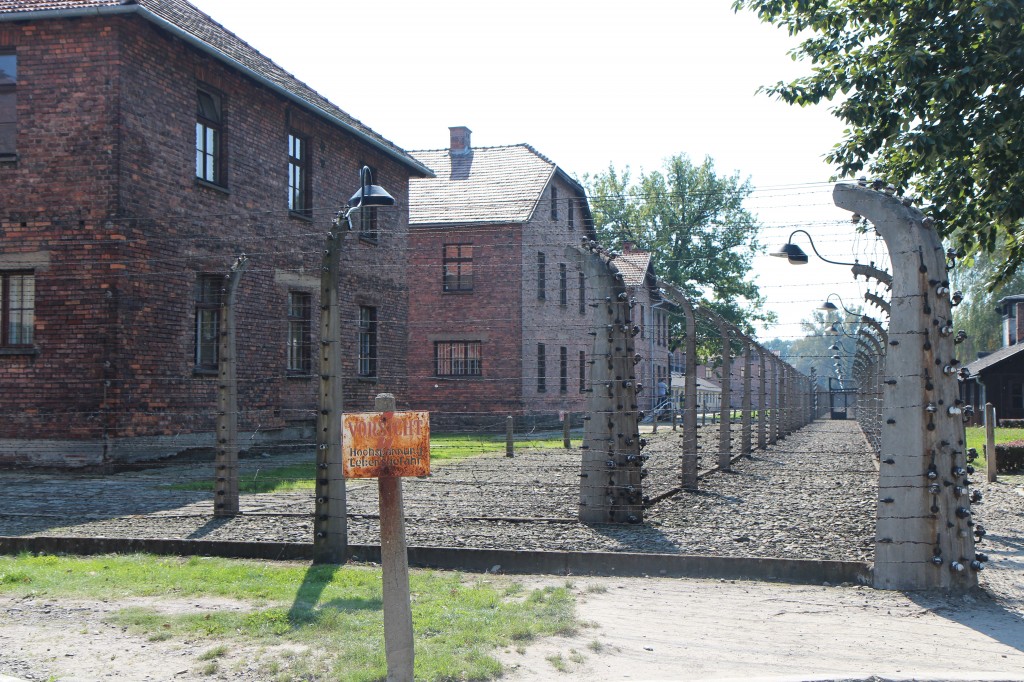
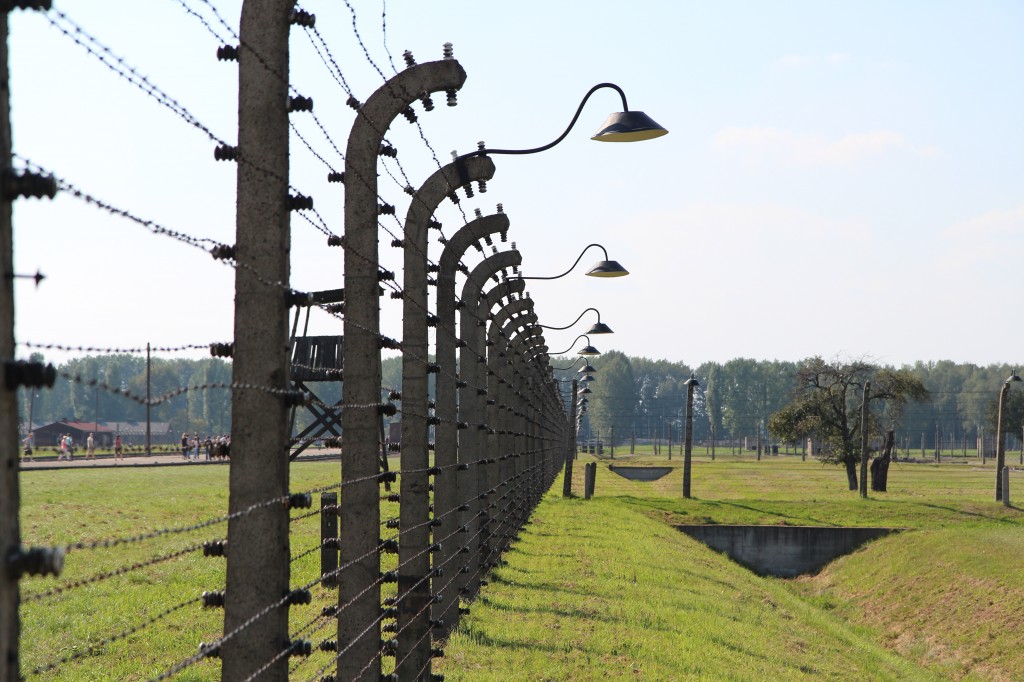
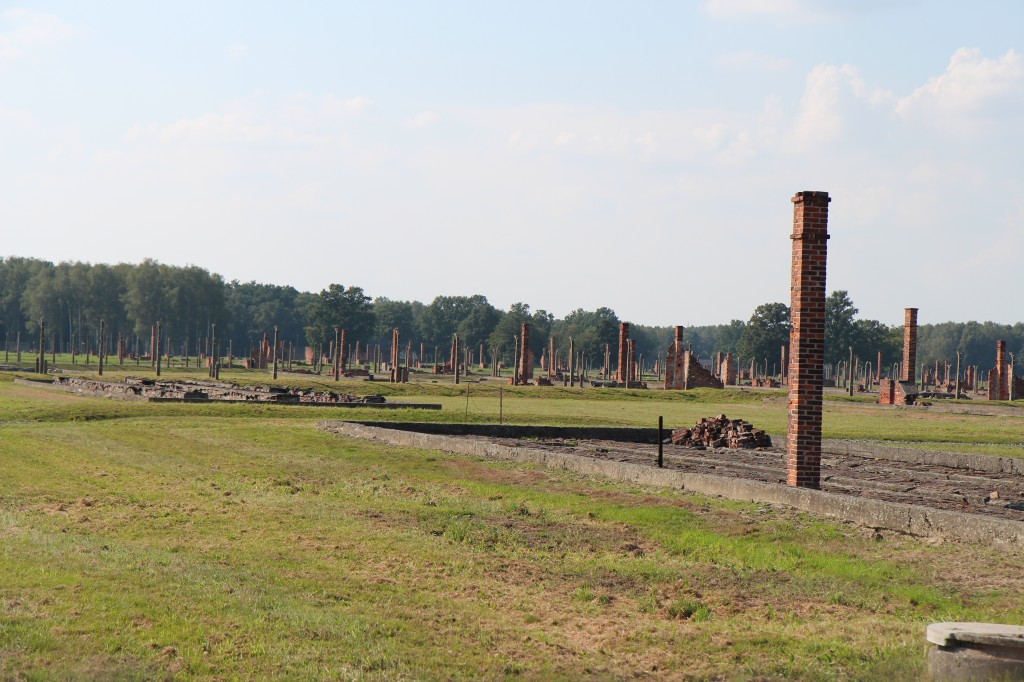
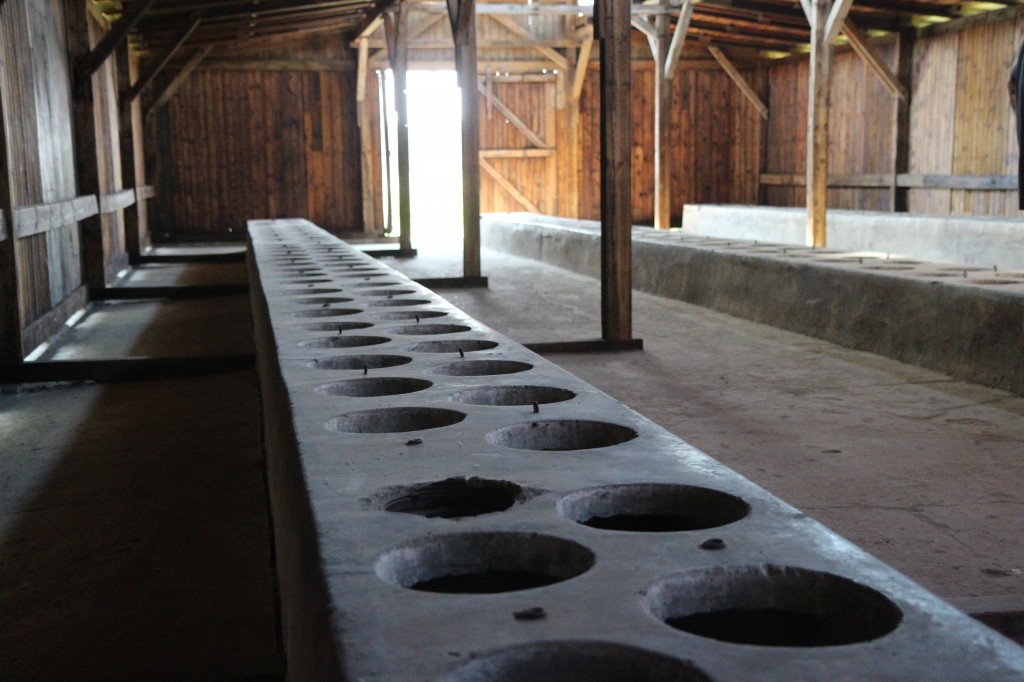
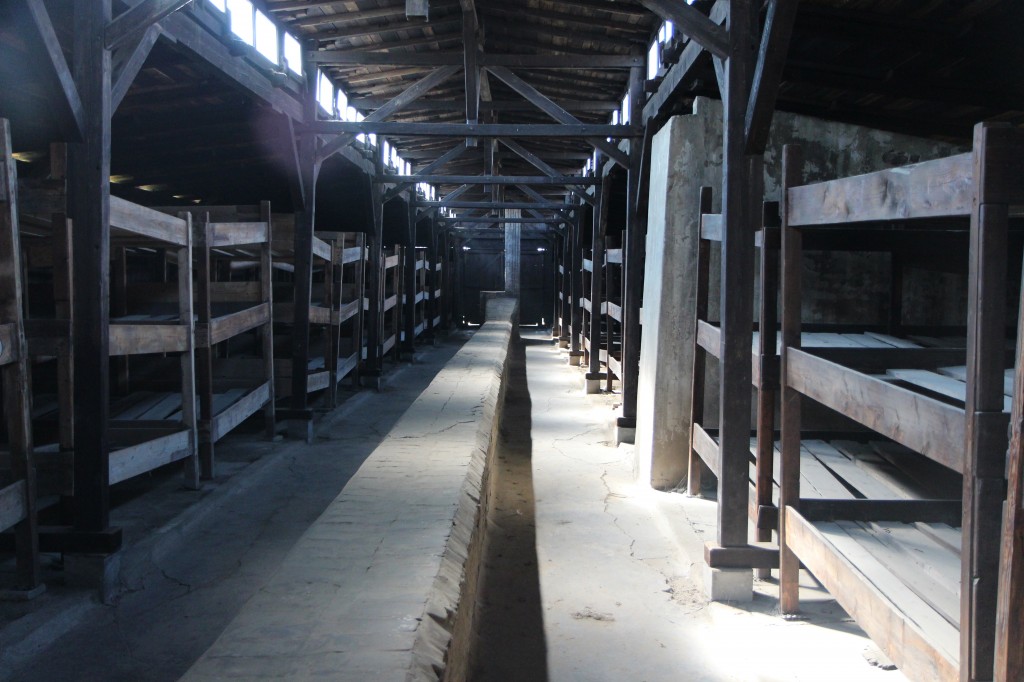
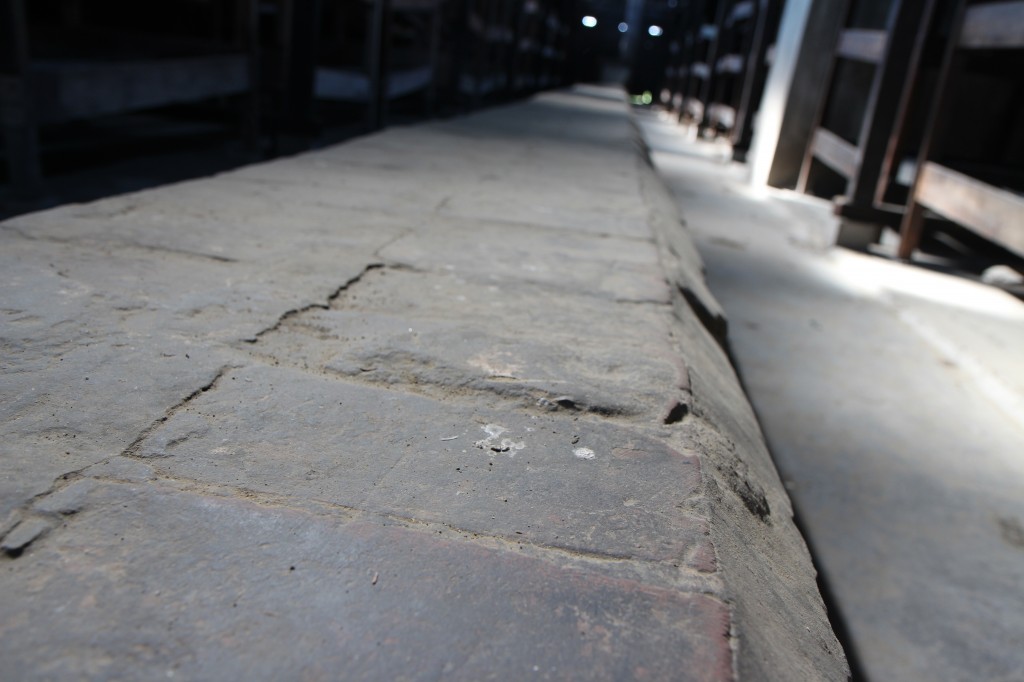
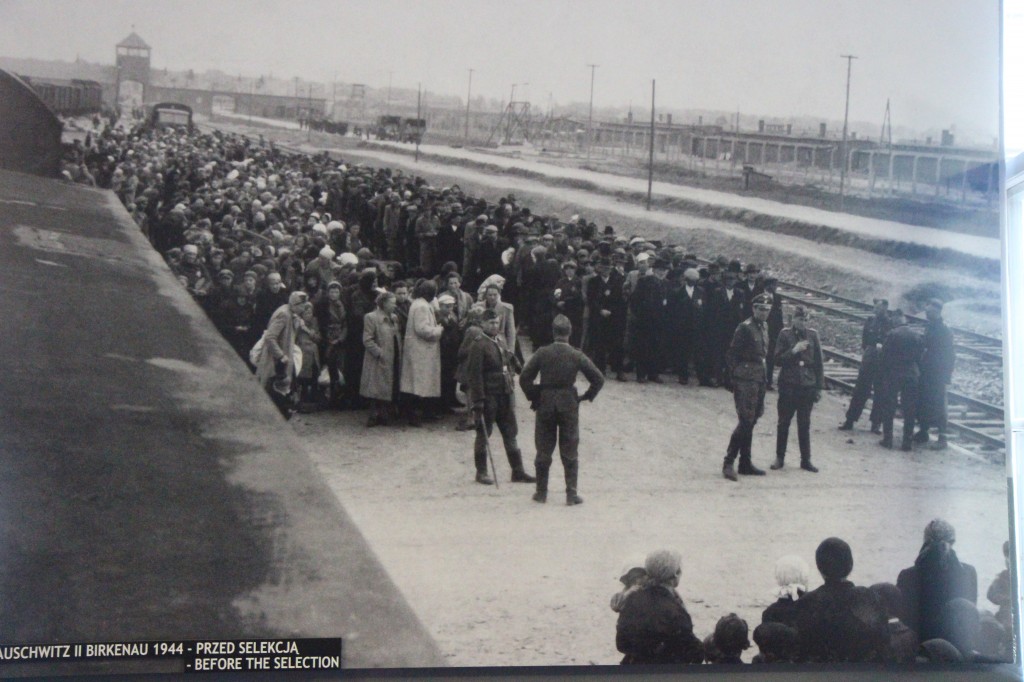
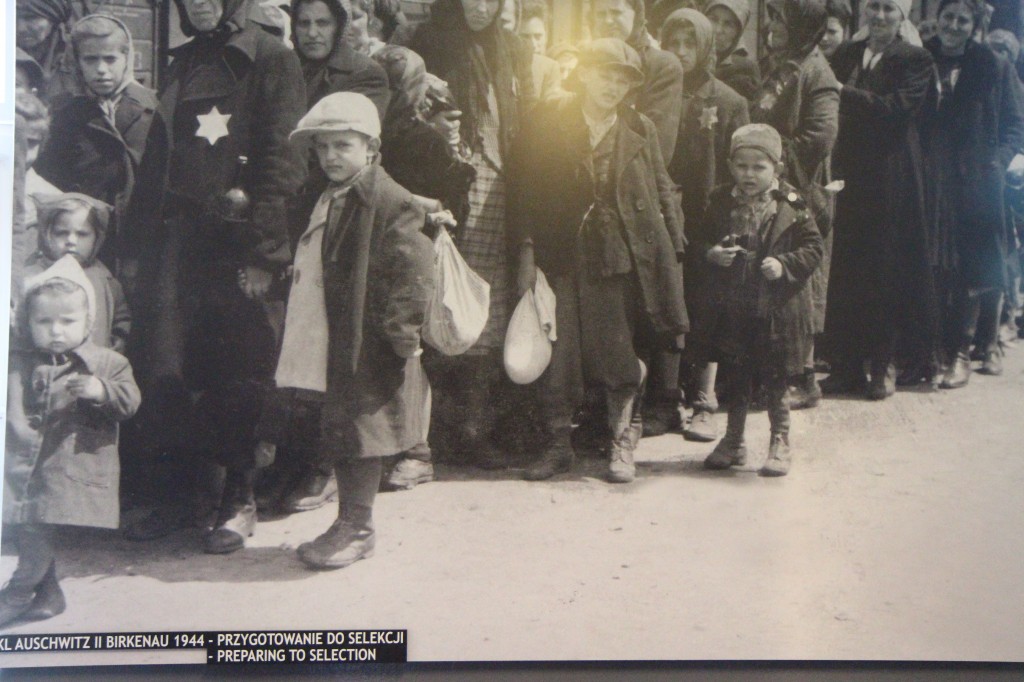
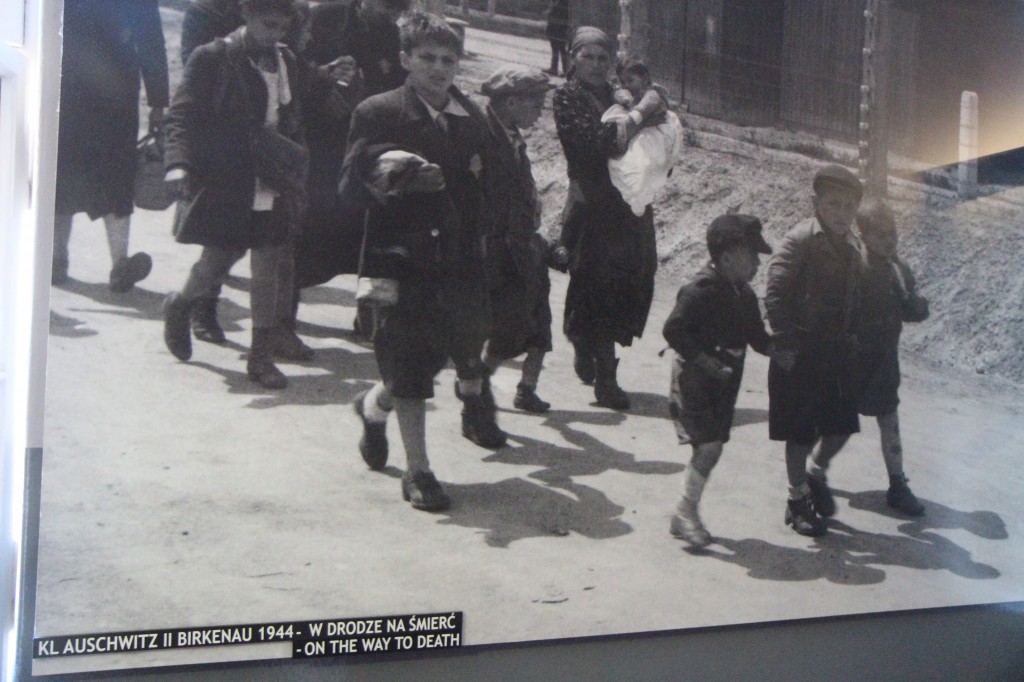
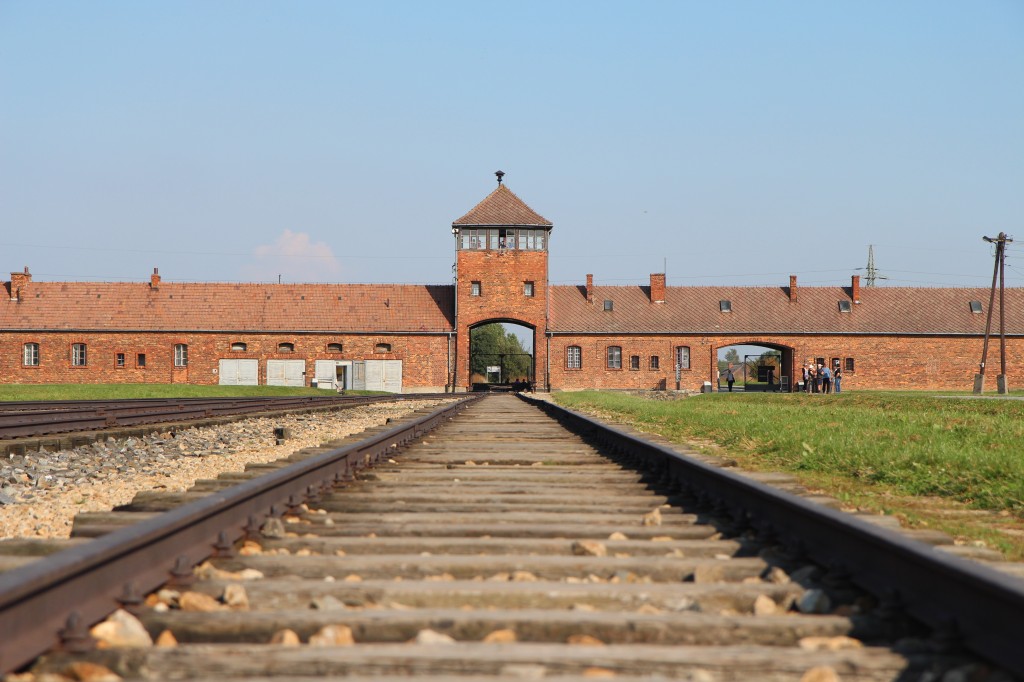
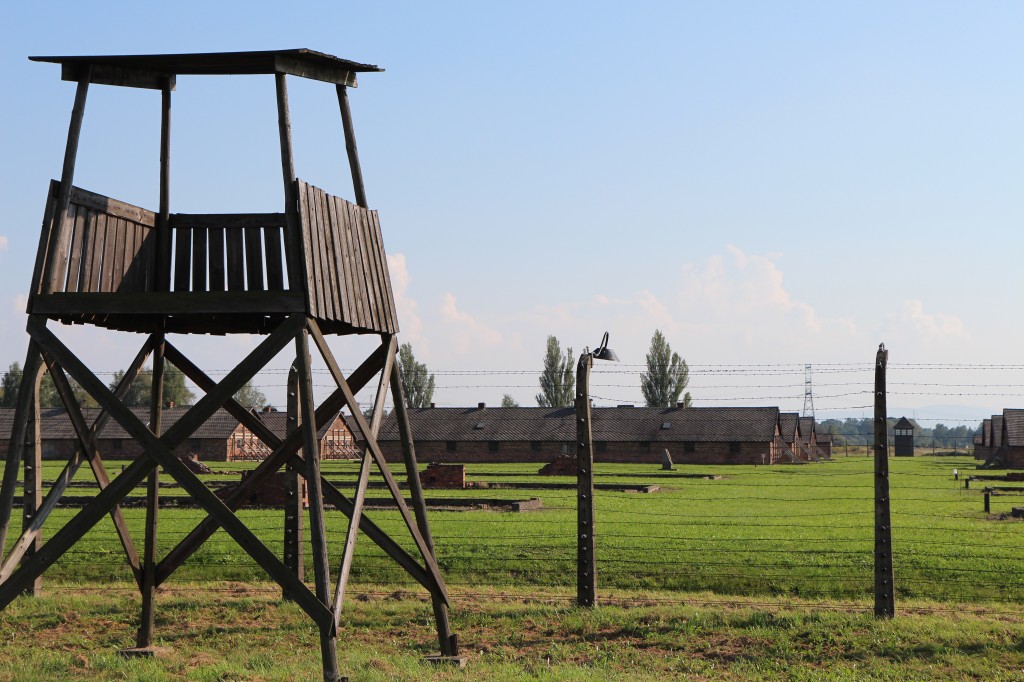
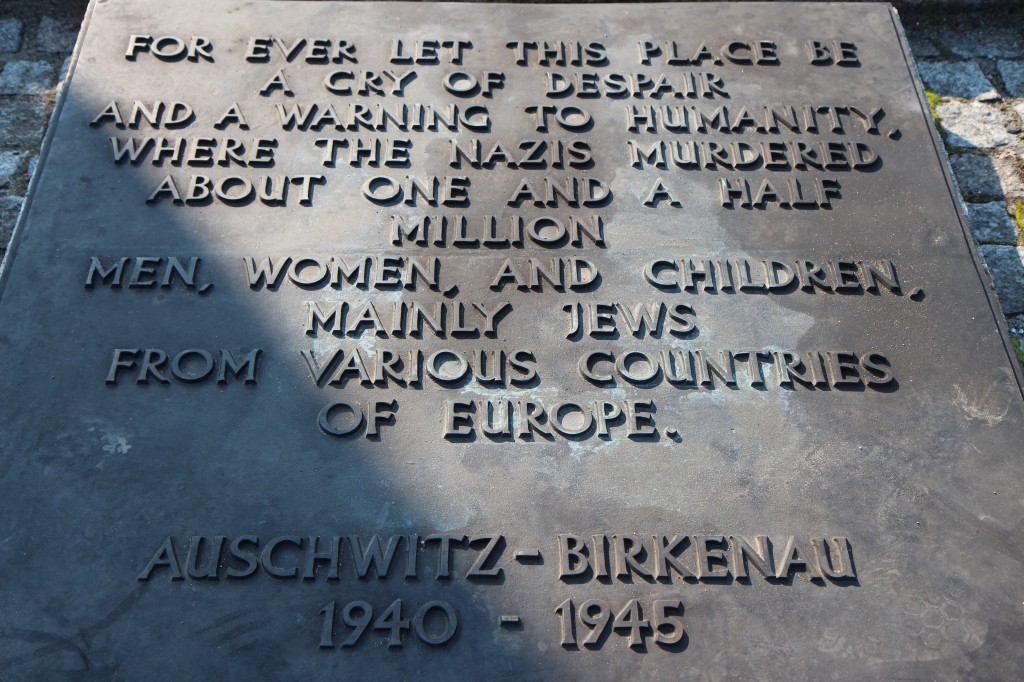
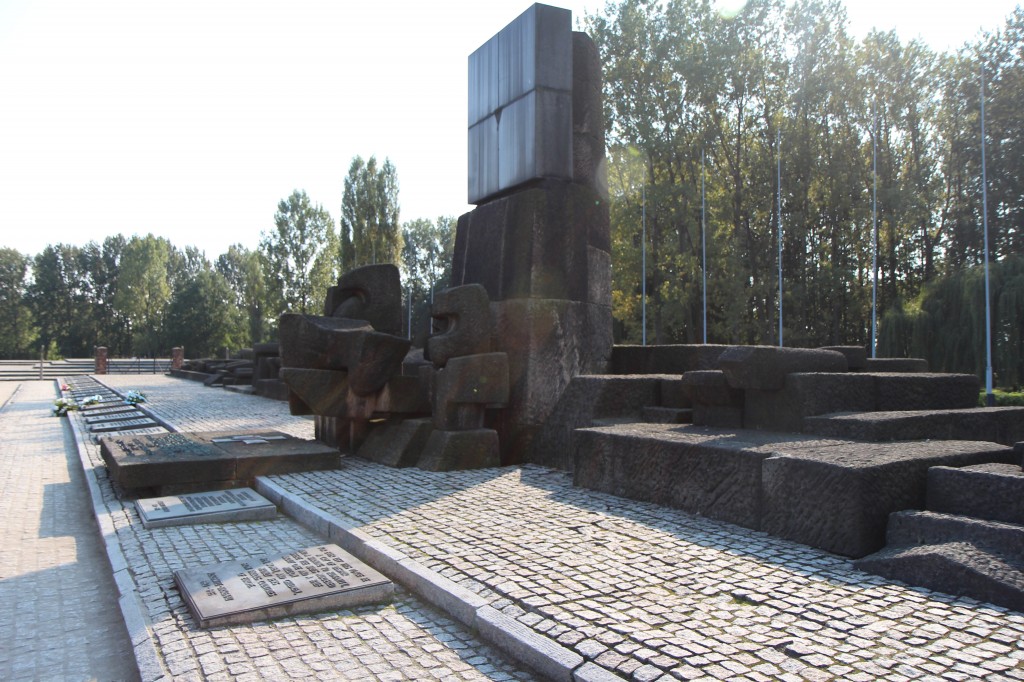
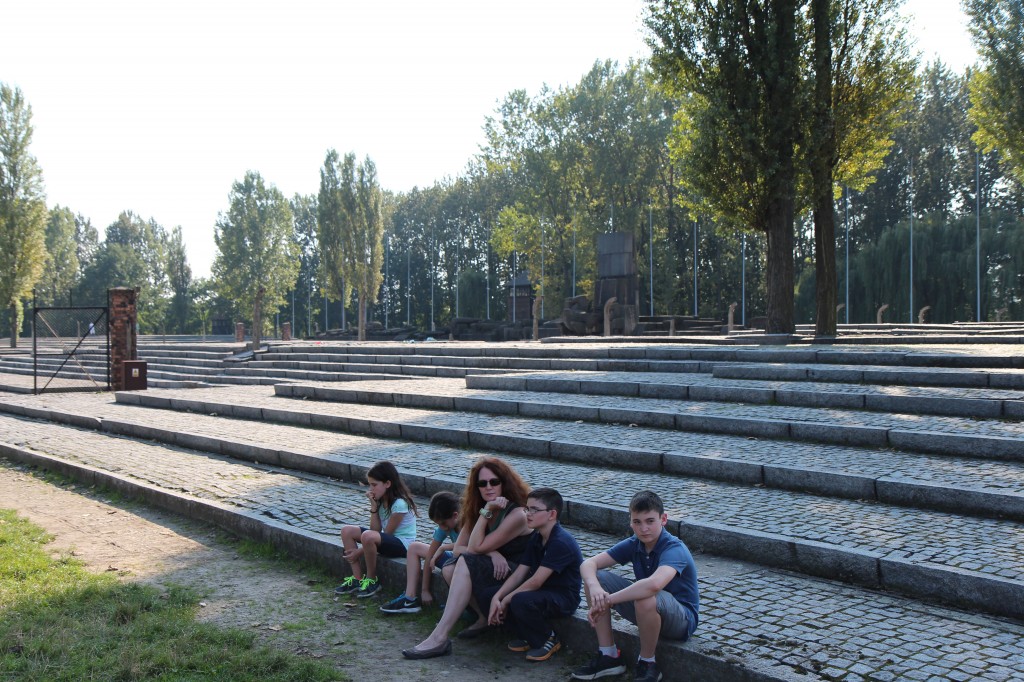
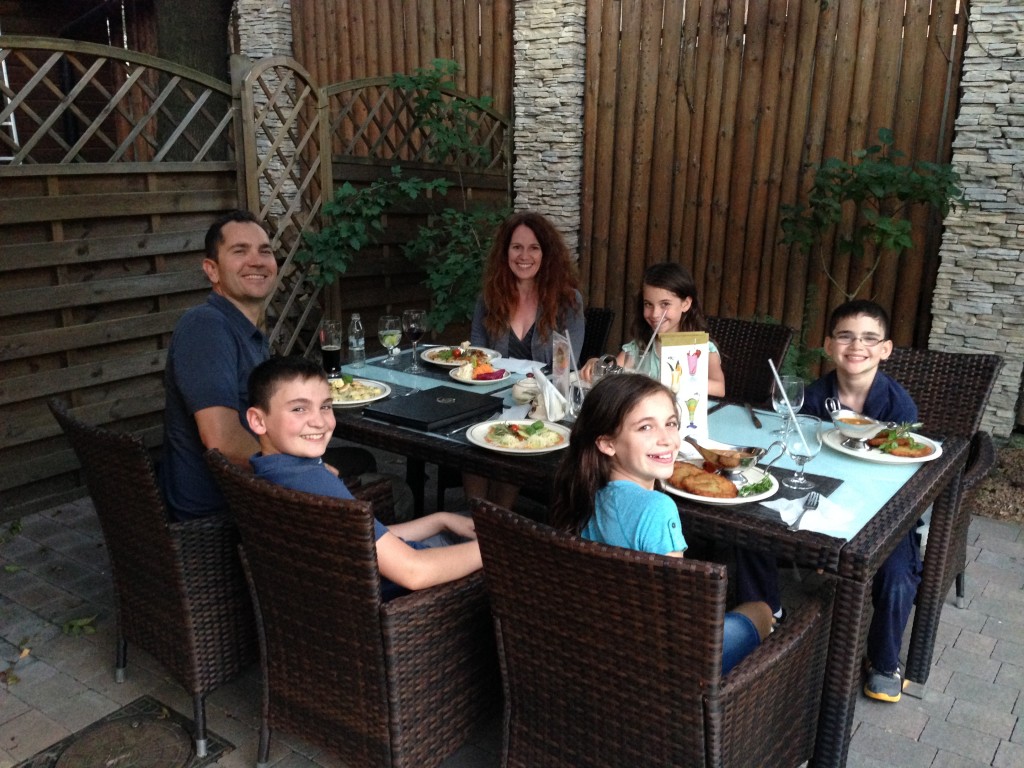
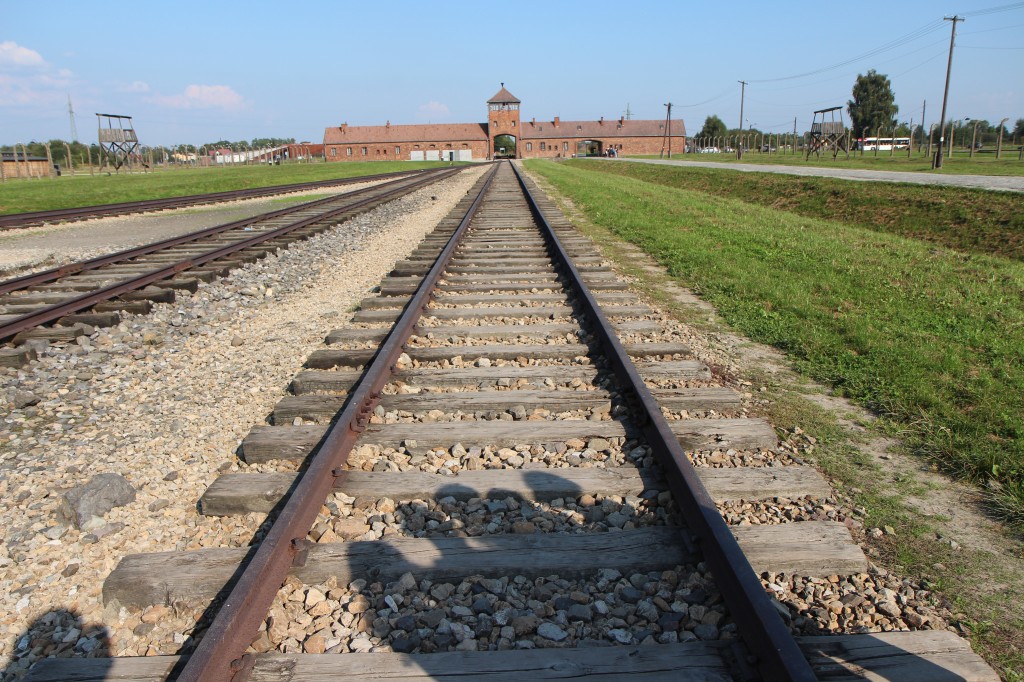
We took Zak to Dachau when he was about 10. It made a profound impact on him. To this day he has deep feelings about the Holocaust. That wasn’t our intent at the time and he had nightmares in the near term after the visit. At times Sarah and I felt guilty about it but now in retrospect it was a good thing.
Aushwitz was very sad indeed, we would like to think that this could never happen again. However it did and reminds me of going to see the Killing Fields in Cambodia five years ago.
Pol Pot (1925-1998) lead a movement from 1975 to 1979 killing around 1.5 million Cambodians, they died from starvation, execution, disease or overwork.
Some say the death toll was even higher…………..Very sad!
Great review of a sad place in human history. Will definitely stop by there if we ever get to Europe.
ps. Everyone looks great!
Maybe a good follow up study would be about Corrie Ten Boom, the French Underground and other brave men and women who resisted and saved others. The skills used by architects for the resistance to make fake walls and special hiding places is a fascinating subject. The Resistance groups many times used children as couriers.